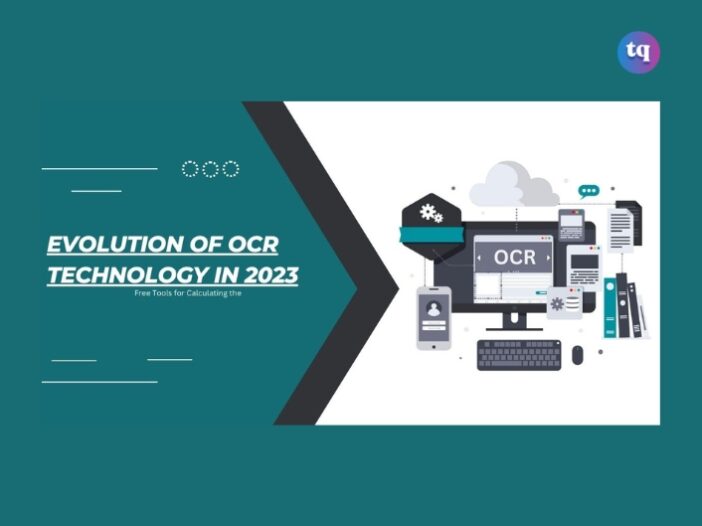
Optical Character Recognition (OCR) has advanced significantly in the constantly changing technological world. OCR technology has seen revolutionary changes that have altered several sectors. With the use of this technology, machines can turn scanned documents and images into editable and searchable data.
OCR technology has transformed how we process, store, and retrieve information. Since its inception, OCR has advanced significantly, constantly developing and enhancing its capabilities.
This in-depth article examines the fascinating development of OCR technology in 2024, from its ancient origins to the newest cutting-edge developments. We talk about how it affects daily life and the workplace.
Table of Contents
The Origins of OCR Technology
The origins of OCR technology can be found around the middle of the 20th century. Algorithms for pattern recognition and machine learning were originally tested by researchers. Early OCR systems were primitive and could only recognize a few typefaces and characters. They were mainly employed in settings related to education and research.
Over time, advances were made in both computing power and machine learning methods. OCR technology has advanced significantly in both performance and accuracy. In the 1970s, the first commercial OCR system was released. It transforms business procedures for data entry and document management.
What is OCR and How Does OCR Work?
OCR, or optical character recognition, is a technology that makes it possible to convert different kinds of documents, such as scanned paper documents, PDF files, or images shot with a digital camera, into editable and searchable data. OCR uses algorithms for pattern recognition to recognize and decipher the characters in the input document. It allows the textual information to be extracted.
OCR technology works by scanning a document with a camera or a scanner. After processing this image, the OCR program looks for patterns, forms, and structures to recognize certain characters. In order to make the content searchable and editable, these characters are then transformed into machine-encoded text.
Advancements in OCR Technology
With the aid of automated OCR technology, computers can detect and translate text that is embedded in images. The captured text can now be modified, searched for, and processed. With the development of digital imagery, image-to-text conversion has made significant improvements.
OCR technology is now widely used across a wide range of sectors. The latest developments have been nothing short of astounding. Here we’ll examine the most recent advancements in OCR technology;
Accuracy and Speed
One of the most notable developments in OCR technology is the significant rise in accuracy and processing speed. Thanks to the incorporation of machine learning techniques. OCR algorithms can now identify text with amazing accuracy, even from blurry photos or intricate fonts. With this improved accuracy, manual verification and correction have been reduced. It saves crucial time and drastically reduces the need for human intervention.
Multi-Language Support
OCR systems no longer have to be restricted to identifying particular scripts and characters. There is now a demand for multilingual OCR capabilities as firms become more international. Text in several languages may now be recognized and processed by modern OCR technology. For global firms and those working with multilingual materials, it is invaluable. Whether it be multilingual contracts, worldwide correspondence, or multilingual bills. Diverse linguistic issues can be handled with ease by modern OCR technologies.
Enhance Data Extraction
The most recent OCR systems go beyond simple text recognition. They include sophisticated algorithms for data extraction. Businesses can use them to extract particular information from both structured and unstructured documents. Names, addresses, and dates are just a few of the crucial data fields they record. In order to extract sophisticated data from invoices and receipts. OCR technology can now handle a variety of data extraction tasks with ease.
Improve Image and Table Recognition
OCR technology has made tremendous progress in identifying embedded images and tables in documents. Non-text components were difficult for traditional OCR to process effectively. However, advances in deep learning have made it possible for OCR solutions to recognize and extract data with remarkably high accuracy from images and tables. For sectors like healthcare, banking, and education, this function is essential.
OCR in Mobile Devices
OCR technology’s incorporation into mobile devices has created new opportunities. Users may now extract text from images and transform it into editable formats using mobile OCR software. OCR has become a useful tool that anyone with a smartphone can use.
Mobile OCR solutions are in demand as a result of the widespread use of smartphones and tablets. The capacity to take and process documents immediately from mobile devices is now expected by users. OCR programs make it simple to digitize documents by enabling text recognition while you’re on the go. Team members can continue to be productive even when they are not at their workstations because of this mobility.
Enhance Image Processing
Dealing with poor image quality has long been one of the main obstacles for OCR technology. However, OCR systems have cutting-edge picture preprocessing tools at their disposal. OCR methods can improve text recognition and image quality. Now, accurate processing is possible even for documents with faded text or hazy photos.
Security and Privacy Measures
As OCR technology spreads, it will be essential to protect data privacy and security. OCR places a high priority on data privacy and uses cutting-edge security methods to protect sensitive data. OCR programs are created to adhere to industry standards. They provide reassurance that your data is secure and confidential, as well as peace of mind.
Final Thoughts
OCR technology has a bright future. Its capabilities are being expanded, and precision is being furthered by continual research and development. We can anticipate seeing even more applications for OCR in a variety of industries as it develops. OCR technology has advanced in a way that is nothing short of amazing, from the early stages to the present-day condition of cutting-edge developments. OCR has significantly improved how we manage information. These developments have far-reaching effects that are advantageous to people, corporations, and society as a whole.